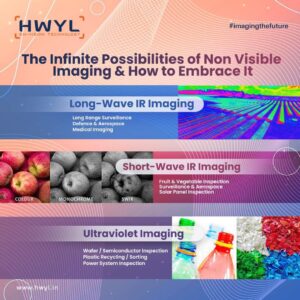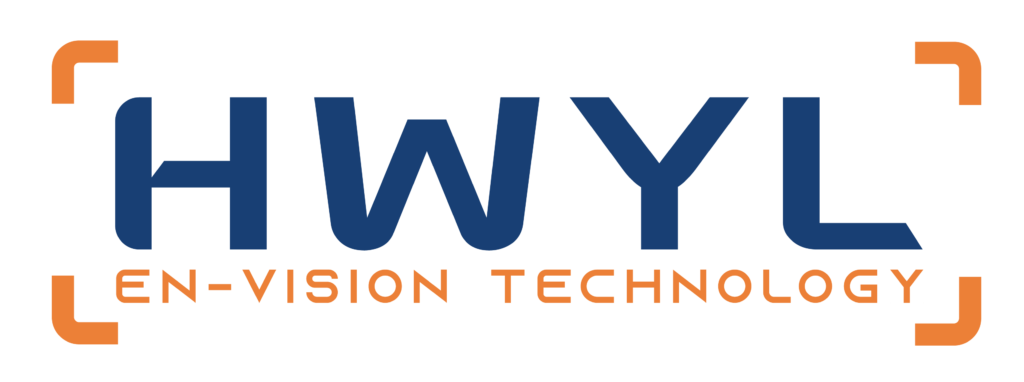
The Infinite Possibilities of Non Visible Imaging & How to Embrace It
Machine vision and image processing systems have been able to achieve breakthroughs across industries by measuring or inspecting complex objects of varied shapes, sizes and materials.However, a vast majority of these systems have been traditionally designed to operate in the visible light range of the electromagnetic spectrum. This is the range of light that the human eye can detect and have wavelengths ranging from 400 – 700 nanometers (nm). But, that is just the tip of the iceberg!
With the applications of machine vision going full steam in the visible range, tech enthusiasts are now exploring frontiers beyond the visible spectrum. Adding to the shift, technology advancements in vision systems have also evolved beyond the visible range and are now delivering the same precision across spectrums outside the visible range. Let’s dive into the slew of applications of non-visible imaging and the prerequisites to extract the best results.
Non Visible Imaging Radiations: Infrared, Thermal and Ultraviolet
The electromagnetic (EM) spectrum consists of the entire range of electromagnetic radiations with varying frequencies, wavelengths and photon energies. Considering wavelength, the spread is between radiations that are a fraction of the size of an atomic nucleus to those that extend to a few kilometres. In this article, we’ll particularly look into the two frequency bands beyond the visible light spectrum – thermal and IR radiations.

The infrared radiation has longer wavelengths than visible light, ranging from 750 nm to 1 mm. This radiation can be further classified into three – Short-wave infrared radiation (SWIR) with wavelengths ranging from 1000 – 3000 nanometers, medium-wave infrared radiation (MWIR) that falls within 3000 nm – 5000 nm, and long-wave infrared or thermal radiation (LWIR) that spans 8000 – 14,000 nm. The ultraviolet radiation has wavelengths shorter than visible light, occupying the 10 nm – 400 nm of the electromagnetic spectrum.
Key Applications of Short-Wave Infrared Radiation
Short-Wave Infrared Radiation (SWIR) is employed for various commercial and scientific applications due to its unique properties. Its ability to capture images and videos in near darkness and low light sensitivity make them perfect for night vision. SWIR’s low scatter property yields clear and detailed images in the field of medicine and is used for endoscopy and vascular imaging procedures. The band also has the ability to assess changes in the water content of plants, making it ideal for monitoring crop health & water content.
SWIR technology’s penetration capabilities are widely leveraged for remote sensing and also for non-destructive testing in the semiconductor and food and beverage industries. Due to its sensitivity to changes in material composition and molecular bonds, SWIR is perfect for material sorting in the recycling and manufacturing sectors. SWIR is also finding its way into the world of art restoration and conservation and is being extensively used in detecting defects in artworks and for uncovering hidden details.
Key Applications of Long-Wave Infrared Radiation
LWIR or Thermal radiation is sensitive to changes in temperature and can capture thermal emissions from objects. This property makes them ideal for building inspections and military surveillance. LWIR sensors are beneficial for meteorologists to analyse and predict weather patterns.
The ability of LWIR cameras to penetrate obscurants is beneficial for firefighting and improves the effectiveness of rescue operations. It is also widely used in medical diagnostics to detect anomalies related to temperature changes such as inflammation of body parts and changes in blood flow in patients.
Key Applications of Ultraviolet Radiation
Ultraviolet (UV) radiation boasts of a spectrum of applications across industries. Being a powerful disinfectant, UV-C radiation is popularly used for sterilization in healthcare, water treatment and food processing domains. Due to their natural fluorescence, UV is also used for forensic examinations and analysis of crime scenes. Phototherapy, environmental monitoring, security and currency validation are some of the other popular applications.
Using the Right Hardware for Non-Visible Imaging
While SWIR, LWIR and UV present numerous possibilities in the machine vision arena, many AI integrators and solution providers are unable to derive the best results from non visible imaging. Many fail to realise that non visible imaging delivers the best results only if supported by the right hardware ecosystem – machine vision lens, sensors and lighting. Each spectrum puts forth unique challenges and possibilities, requiring specific setups.
For example, SWIR radiation requires cameras and lenses that can match its penetration capabilities; LWIR radiation requires sensors of the right thermal sensitivity and response time. Equal importance should be given to the optical properties of lenses including focal length, aperture, and field of view.
Many of you may not be aware that there are full-fledged hardware ecosystems offered by top machine vision players to help you get started. Trusted names like HWYL can be your go-to partner in exploring the full range of possibilities in non visible imaging.
Your Search for the Perfect Hardware Setup Ends at HWYL
Are all the technicalities bogging you down? We can help! HWYL, the emerging machine vision solutions provider based out of Bangalore, can equip you with the right hardware – camera, lenses and sensors that are apt for non-visible imaging. Beyond hardware, our experts can also guide you through picking the right solution for your application and also support you through the implementation, till you attain success.
